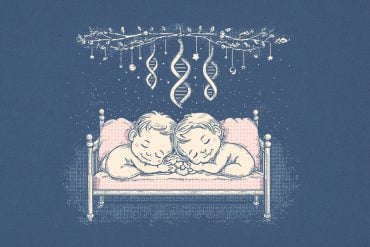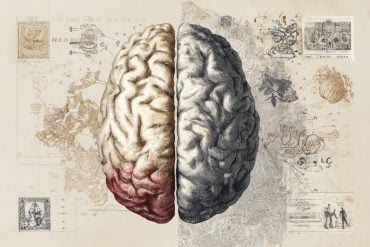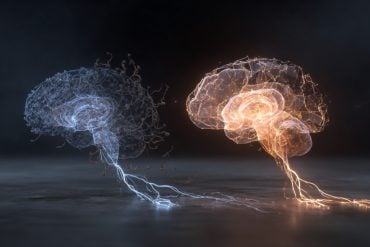Summary: New research using AI and 3D imaging has discovered that each person’s tongue surface, with its distinct papillae patterns, is unique. The study involved analyzing over two thousand detailed scans from fifteen individuals.
The findings highlight the potential for personalized food development, early oral cancer diagnosis, and a deeper understanding of taste and touch variations. This breakthrough underscores the intricate biological uniqueness of the human tongue and opens doors to numerous health and culinary applications.
Key Facts:
- AI analyzed 3D scans of the human tongue, revealing unique patterns of papillae in each individual.
- The study’s AI models predicted personal characteristics like age and gender with up to 85% accuracy based on tongue features.
- This research paves the way for personalized culinary experiences and early detection of oral health issues.
Source: University of Edinburgh
Artificial Intelligence (AI) and 3D images of the human tongue have revealed that the surface of our tongues are unique to each of us, new findings suggest.
The results offer an unprecedented insight into the biological make-up of our tongue’s surface and how our sense of taste and touch differ from person to person.
The research has huge potential for discovering individual food preferences, developing healthy food alternatives and early diagnosis of oral cancers in the future, experts say.

The human tongue is a highly sophisticated and complex organ. It’s surface is made up of hundreds of small buds – known as papillae – that assist with taste, talking and swallowing.
Of these numerous projections, the mushroom-shaped fungiform papillae hold our taste buds whereas the crown-shaped filiform papillae give the tongue its texture and sense of touch.
The taste function of our fungiform papillae has been well researched but little is known about the difference in shape, size and pattern of both forms of papillae between individuals.
A team of researchers led by the University of Edinburgh’s School of Informatics, in collaboration with the University of Leeds, trained AI computer models to learn from three-dimensional microscopic scans of the human tongue, showing the unique features of papillae.
They fed the data from over two thousand detailed scans of individual papillae – taken from silicone moulds of fifteen people’s tongues – to the AI tool.
The AI models were designed to gain a better understanding of individual features of the participant’s papillae and to predict the age and gender of each volunteer.
The team used small volumes of data to train the AI models about the different features of the papillae, combined with a significant use of topology – an area of mathematics which studies how certain spaces are structured and connected.
This enabled the AI tool to predict the type of papillae to within 85 per cent accuracy and to map the position of filiform and fungiform papillae on the tongue’s surface.
Remarkably, the papillae were also found to be distinctive across all fifteen subjects and individuals could be identified with an accuracy of 48 per cent from a single papilla.
The findings have been published in the journal Scientific Reports:
The study received funding from the United Kingdom Research and Innovation (UKRI) CDT in Biomedical AI and European Research Council (ERC) under the European Union’s Horizon 2020 research and innovation program.
Senior author, Professor Rik Sakar, Reader, School of Informatics, University of Edinburgh, said:
“This study brings us closer to understanding the complex architecture of tongue surfaces.
“We were surprised to see how unique these micron-sized features are to each individual. Imagine being able to design personalized food customised to the conditions of specific people and vulnerable populations and thus ensure they can get proper nutrition whilst enjoying their food.
Professor Sakar, added:
“We are now planning to use this technique combining AI with geometry and topology to identify micron-sized features in other biological surfaces. This can help in early detection and diagnosis of unusual growths in human tissues.
Lead author, Rayna Andreeva, PhD student at the Centre for Doctoral Training (CDT) in Biomedical AI, University of Edinburgh, said:
“It was remarkable that the features based on topology worked so well for most types of analysis, and they were the most distinctive across individuals. This needs further study not only for the papillae, but also for other kinds of biological surfaces and medical conditions.”
About this AI research news
Author: Rhona Crawford
Source: University of Edinburgh
Contact: Rhona Crawford – University of Edinburgh
Image: The image is credited to Neuroscience News
Original Research: Open access.
“Machine learning and topological data analysis identify unique features of human papillae in 3D scans” by Rik Sakar et al. Scientific Reports
Abstract
Machine learning and topological data analysis identify unique features of human papillae in 3D scans
The tongue surface houses a range of papillae that are integral to the mechanics and chemistry of taste and textural sensation.
Although gustatory function of papillae is well investigated, the uniqueness of papillae within and across individuals remains elusive. Here, we present the first machine learning framework on 3D microscopic scans of human papillae (n=2092), uncovering the uniqueness of geometric and topological features of papillae.
The finer differences in shapes of papillae are investigated computationally based on a number of features derived from discrete differential geometry and computational topology. Interpretable machine learning techniques show that persistent homology features of the papillae shape are the most effective in predicting the biological variables.
Models trained on these features with small volumes of data samples predict the type of papillae with an accuracy of 85%. The papillae type classification models can map the spatial arrangement of filiform and fungiform papillae on a surface.
Remarkably, the papillae are found to be distinctive across individuals and an individual can be identified with an accuracy of 48% among the 15 participants from a single papillae.
Collectively, this is the first evidence demonstrating that tongue papillae can serve as a unique identifier, and inspires a new research direction for food preferences and oral diagnostics.






